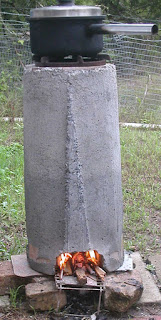Recycling glass bottles at home.
Our local Single Stream recycling center no longer accepts glass for recycling. I have been letting the bottles stack up in a pile out in the yard, but decided to find a use for them. My first idea was to smash them up into sand that would be used in my Sandblaster.
https://www.raptorblastingsolutions.com/product/crushed-glass-sacramento-sandblasting/
Crushed glass is used as an abrasive sandblasting media in a variety of industries such as: dustless wet blasting, slurry blasting, blasting ship hulls, concrete restoration, cleaning tanks or pipelines, graffiti removal, and auto restoration.
- Fine: 70/100 mesh grit
- Medium-Fine: 40/70 mesh grit
- Medium-Coarse: 20/40 mesh grit
Applications for Crushed Glass Abrasive
Fine (70/100): Perfect for blasting aluminum, chrome, brick, concrete, and wood. Applications may include graffiti removal, dustless blasting, paint removal, aged wood restoration.
Medium-Fine (40/70): Surfaces you can blast include slate, marble, fiberglass, stone, copper, brass, iron, brick, granite, or concrete. Ideal for mill scale removal, building restoration, automotive, general cleaning or stripping.
Medium-Coarse (20/40): Uses include bridges, tanks, steel construction, metal fabrication, or precast concrete where a deeper profile is preferable.
Practicality of Using Crushed Glass For Sandblasting
Crushed glass is primarily used as an abrasive media for outdoor dry blasting. Many suppliers use recycled beer and wine bottles to create crushed glass abrasive media. Compared to other abrasive blasting media, such as aluminum oxide, crushed glass is less expensive, but has different applications. Crushed glass is not usually recycled, like other sandblasting media might be.
Similar to aluminum oxide and garnet, crushed glass leaves an angular profile on the blasting surface. Peaks and valleys are left on the substrate, creating an anchor pattern for powder coating, painting, or other coatings.
Powder coating sits above the profile at about 10mm, while the angular profile etched by the abrasive sits at about 3mm. This gives the powder coating or paint something to cling onto, making the surface stronger. Crushed glass is somewhere between a 5 and 6 on the Mohs hardness scale.
Crushed glass is also ideal for the removal of surface coatings such as rust, paint and scale from a wide variety of substrates, like aluminum, stainless steel, concrete, brick, and wood.
Using crushed glass in various concrete mixes to replace sand.
I now have about six 5 gallon buckets of crushed glass, and added some to some small test blocks of concrete.
A source of good info: https://www.ncbi.nlm.nih.gov/pmc/articles/PMC7795207/
Quoting from the above article: "The addition of glass powder in the amount of 15% results in the highest increase in compression, bending and tensile strength. Many years of observations after the walls and panels were made have shown a continuous improvement in the mechanical performance and resistance chloride-ion penetration of the glass powder concrete due to its pozzolanic reactivity. The water absorption and porosity were also decreased when using glass powder [6]. The incorporation of glass as a cement replacement or even as aggregate can decrease the alkali silica reaction (ASR) effects and its efficiency is related with the replacement ratio [7]. Concrete with cement replaced by 15% and 30% glass powder exhibited the highest strength increase and correspondingly the lowest porosity [8]. However, the high-volume glass powder concrete retained distinct resistance against water and chloride ingress, due to the reduction in pore size and connectivity. Other research [9] has shown that the use of recycled glass powder (RGP) as cement replacement is feasible for a replacement level up to 10%. However, long term curing and lower particle size distribution are mandatory for the successful use of RGP with higher replacement levels without compromising the strength. Test results [10] reflect a slow and continuous pozzolanic activity of the glass powder in mixtures with enough free water available. The improvement in the mechanical strength and durability of the cementitious materials modified with glass powders can be attributed to microstructure improvement arising from the pozzolanic property of the glass powders [11]."
ASR discussion
https://www.concretedecor.net/departments/concrete-placing/waste-glass-in-concrete-has-advantages-and-disadvantages/
Besides powder, you can also use waste glass as an aggregate in concrete in the form of fine or coarse aggregates. Since aggregates occupy approximately 70% of the concrete, using glass cullet as aggregate in concrete does more than incorporate more waste glass in concrete. It also decreases the energy and time required to ground the glass particles into powder.
However, you should consider a mitigation method to suppress alkali-silica reaction (ASR) when the concrete mixture contains glass aggregates. ASR is a chemical reaction between alkalis from portland cement and reactive aggregates within the concrete that results in ASR gel.
With moisture present, ASR gel expands and causes the concrete to deteriorate. People consider glass aggregates highly reactive due to both high alkali and silica content embedded in their microstructure, (Glass has approximately 70% silica and 15% sodium.) Typically, concrete containing green glass exhibits less distress due to the presence of chromium.
Eliminating ASR reaction
There are several ways to eliminate the likelihood of deleterious ASR reaction in concrete containing waste glass aggregates. Using low-alkali portland cement and/or incorporating supplementary cementitious materials (SCMs) such as silica fume, fly ash, slag and metakaolin can mitigate ASR distress in concrete containing waste glass aggregate.


Comments
Post a Comment